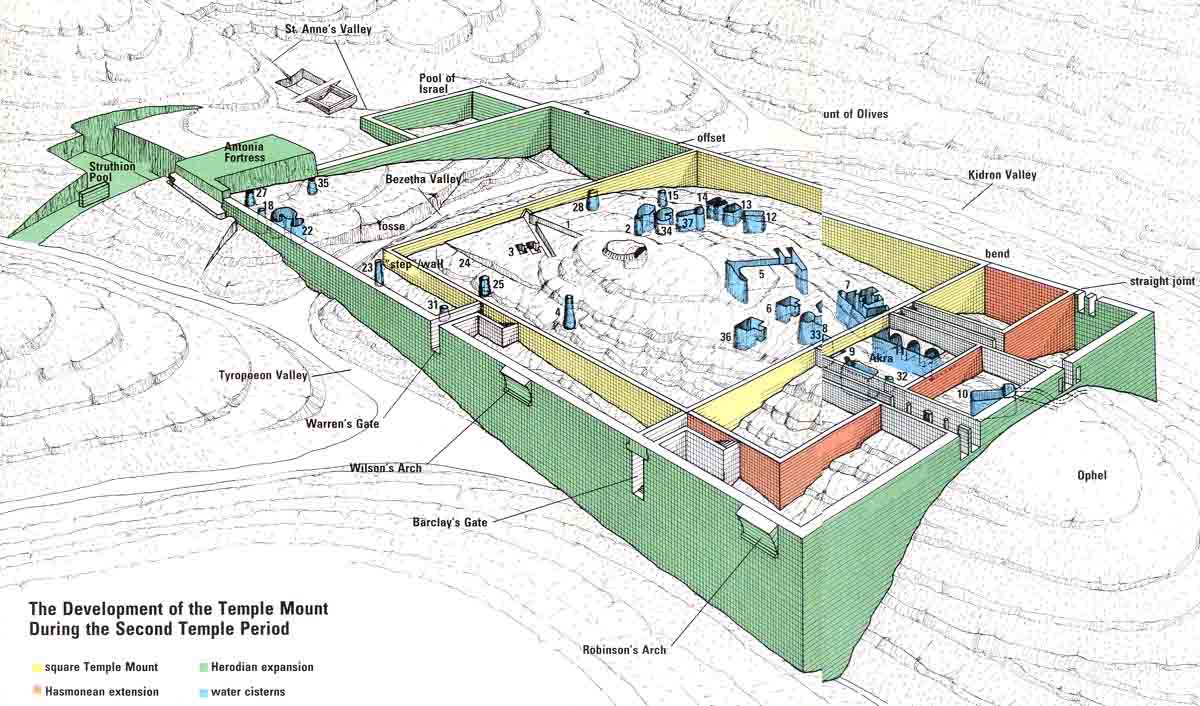Image Details

Leen Ritmeyer
A cut-away look at the Temple Mount. Combining architectural features from various periods, the underlying topography of the bedrock and cisterns (blue) and passageways cut into the bedrock, this drawing shows the Temple Mount’s expanding boundaries over time (in practice, older walls would have been covered over or their stones reused elsewhere when new construction took place). Not shown is the surface of the Temple Mount itself or the structures built atop it, most notably the Temple.
At center, shown in yellow, are the walls of the square Temple Mount of the First Temple period, measuring 500 cubits on each side. Extending to the south is the location of the Seleucid fortress known as the Akra, built in about 186 B.C. The Akra was dismantled in 141 B.C. and a Hasmonean addition was then built across the entire southern side of the previous square Temple Mount (orange). The outermost walls (green) represent the Herodian addition on the south, west and north.
